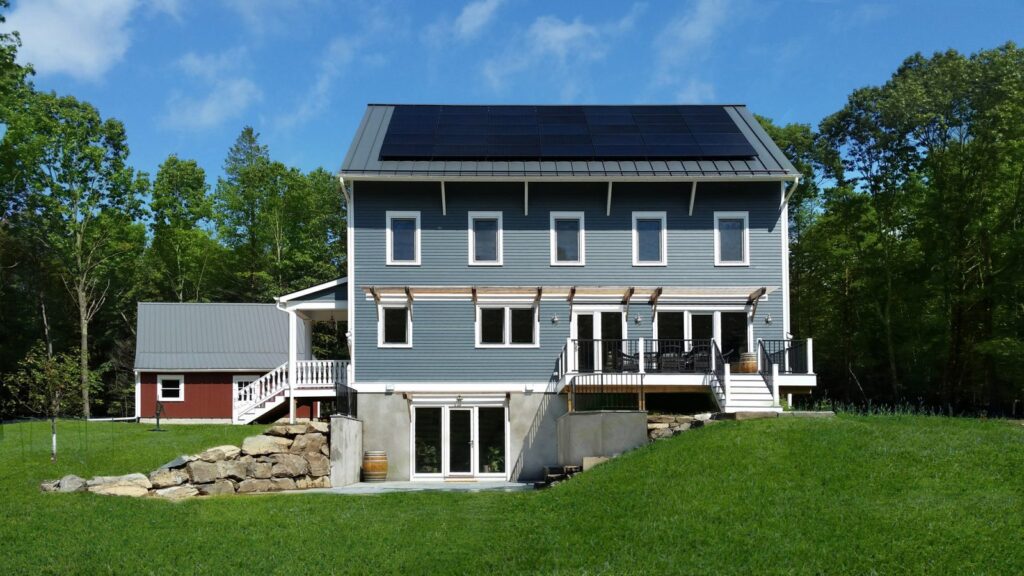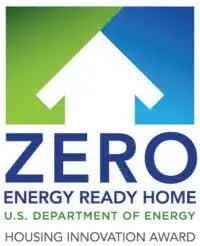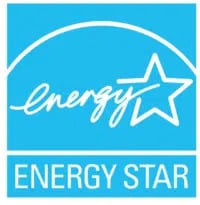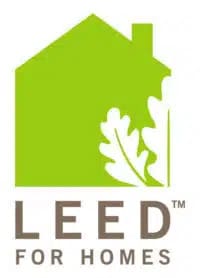
Guest Author: Original article written by Julie Scott and published in June 2018; updated in July 2025
With an increased focus on greener building and energy efficiency, the term “passive solar” is being used more and more. Not to be confused with solar panels, passive solar is the use of the natural environment in a way that optimizes the internal temperature of a home. Rather than relying heavily on mechanical cooling or heating systems, a passive solar design will instead focus on building in a way that encourages the retention of warmth in winter and the reflection of heat in summer.
A home with a well thought out passive solar design will collect heat from the sun and store it in the “thermal mass” of the building (dense materials like concrete and brick that retain heat). For passive solar to work, the thermal mass has to be within the thermal envelope of the home. Exterior brick, concrete, stone, and so on are thermal masses but are outside of the home’s thermal envelope. Engaging a builder who has experience in passive solar design will go a long way towards improving the energy efficiency of a new house, as passive solar designs will vary based on what climate the home is situated in.
1) South-Facing Windows
To make the most of the sun’s natural warmth, windows in the main living areas should face towards the south and be free of shading during the winter months when the sun is lower.
If the roof overhang is correctly sized, then this will block excessive heat during the warmer months (when the sun is higher). Alternatively, the installation of an awning or shutters can have a similar effect.
2) Thermal Mass
Building materials with thermal mass will absorb heat during the day and then release it slowly at night when the temperature drops.
A well-insulated home with products such as brick, masonry, or concrete (all commonly used in construction) that are INSIDE of your home’s thermal envelope will assist with warming the house in winter and cooling it down in summer.
3) Energy Efficient Windows
Some people may express concern that installing windows will be counterproductive to passive solar design, but this is not necessarily the case.
Energy efficient windows block ambient outside temperature (whether it is cold or hot), while still allowing radiant heat to pass through. This means that a home with energy efficient windows will still benefit from winter sunlight, but with reduced heat loss in winter and improved retention of warmth in winter.
Passive Solar Benefits in New Green Homes and Green Retrofits
A home with optimal passive solar design will be comfortably cool in summer, warm and cozy in winter, and receive a good deal of sunlight all year round.
Although a greater level of energy efficiency can be achieved when passive solar is a consideration before a home is built, existing houses can still benefit from passive solar concepts. Simple and effective steps such as installing shutters, upgrading window glazing or increasing insulation can all contribute to an improved passive solar design. Although some of these tasks could be completed by homeowners, engaging the services of a professional may save time and money in the long run.
Houses that are constructed with a passive solar design will effectively reduce the need to rely on mechanical heating and cooling systems, thereby lowering power usage, minimizing utility bills, and benefiting the environment.
Passive Solar and Green Home Construction: How They Work Together
Passive solar energy is not just a standalone design concept—it’s a foundational principle in high-performance green home construction. Many certifications and standards for green homes, including Passive House, Zero Energy Ready Homes, and LEED-certified homes, incorporate passive solar strategies to reduce energy use and improve comfort year-round.
A Passive House takes the principles of solar gain, thermal mass, airtightness, and insulation to the highest level. A Passive House uses very little energy to maintain comfortable indoor temperatures and often requires little to no conventional heating, thanks in part to well-designed passive solar heating and cooling strategies.
How Passive Solar Supports Green Building Certification
At BPC Green Builders, we design and build homes that meet or exceed rigorous green building standards. That includes Passive Houses that are carefully engineered to use passive solar energy as part of a whole-home approach to performance, comfort, and sustainability.
You can visit our portfolio to see examples of actual Passive Houses we have built in western Connecticut and New York’s Hudson Valley.
Build a Certified Green Home with Passive Solar Benefits
Whether you’re planning to build a Passive House or simply want to incorporate passive solar strategies into your next home, BPC Green Builders has the experience to bring your vision to life. Our homes are designed to be energy-efficient, resilient, and healthy—backed by certifications that prove their performance.












